-
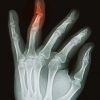 +7 +1
+7 +1New material could ‘drive wound healing’ using the body's inbuilt healing system
Materials are widely used to help heal wounds: Collagen sponges help treat burns and pressure sores, and scaffold-like implants are used to repair broken bones. However, the process of tissue repair changes over time, so scientists are looking to biomaterials that interact with tissues as healing takes place.
-
 +13 +1
+13 +1Mapping the brain, cell by cell
MIT chemical engineers and neuroscientists have devised a new way to preserve biological tissue, allowing them to visualize proteins, DNA, and other molecules within cells, and to map the connections between neurons. The researchers showed that they could use this method, known as SHIELD, to trace the connections between neurons in a part of the brain that helps control movement and other neurons throughout the brain.
-
 +20 +1
+20 +1Cannabis gets its high-inducing power from ancient viruses
In the latest issue of Genome Research, a group of North American scientists have, for the first time ever, published a full map of the cannabis genome. Among the myriad of interesting insights to glean from the chart is the finding that the genes that encode for THC and CBD production evolved thanks to bits of DNA introduced by viruses that infected the plant and successfully colonized its genome millions of years ago.
-
 +12 +1
+12 +1How biologists are creating life-like cells from scratch
Built from the bottom up, synthetic cells and other creations are starting to come together and could soon test the boundaries of life. By Kendall Powell.
-
 +9 +1
+9 +1A century-old model for life's origin gets significant substantiation
In an article just appeared in the Journal of the Royal Society Interface. Lancet and colleagues report an extensive literature survey, showing that lipids can exert enzyme-like catalysis, similar to ribozymes.
-
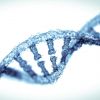 +7 +1
+7 +1DNA can be manipulated to create tiny machines and computers
The shape of DNA can be manipulated to create tiny machines and computers, and scientists have discovered a range of new “triggers” to control this process. Adding substances like copper and oxygen to molecules of DNA can force it to change its shape. Creating a range of DNA shapes provides scientists with a toolkit they can then use to construct tiny pieces of technology from the building blocks of life.
-
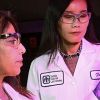 +10 +1
+10 +1Riding bacterium to the bank
What does jet fuel have in common with pantyhose and plastic soda bottles? They’re all products currently derived from petroleum. Sandia National Laboratories scientists have demonstrated a new technology based on bioengineered bacteria that could make it economically feasible to produce all three from renewable plant sources. Economically and efficiently converting tough plant matter, called lignin, has long been a stumbling block for wider use of the energy source and making it cost competitive.
-
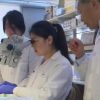 +15 +1
+15 +1CRISPR Could Eliminate Genetic Disease: UCSD Scientist
It's so small it can’t be seen with the naked eye, but research is showing that CRISPR (Clustered Regularly Interspaced Short Palindromic Repeats) is bringing sight to the blind.
-
 +2 +1
+2 +1Scientists downsize bold plan to make human genome from scratch
A bold plan to synthesize an entire human genome has been scaled back, aiming at a more technically attainable near-term goal. Instead of synthesizing all of the human genome’s 3 billion DNA base pairs, the project will now attempt to recode the genome to produce cells immune to viral infection. Organizers of Genome Project–Write (GP-write), a global public–private partnership that includes around 200 scientists, announced the priority shift at a meeting in Boston, Massachusetts, on 1 May.
-
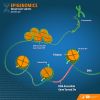 +11 +1
+11 +1Cold Temp Exposure Causes Epigenetic Changes in Fat Cells
Perhaps the enduring wintry weather that has consumed much of North America well into springtime could have some positive effects on the human body. New evidence from investigators at the University of Tokyo and Tohoku University in Japan has revealed a molecular mechanism that controls how lifestyle choices and the external environment affect gene expression. This mechanism includes potential targets for next-generation drug discovery efforts to treat metabolic diseases, including diabetes and obesity.
-
 +20 +1
+20 +1CRISPR may not cause hundreds of rogue mutations after all
A scientific journal has retracted a controversial paper, published last year, that suggested the gene-editing tool CRISPR was a genome wrecking ball. In the retracted study, researchers sought to use CRISPR in mice to correct a mutation that causes blindness. They successfully fixed the genetic error but reported that CRISPR inadvertently made more than a thousand other changes—potentially harmful ones—in the animals’ DNA.
-
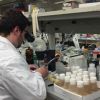 +22 +1
+22 +1Clues to aging found in stem cells' genomes
Little hints of immortality are lurking in the stem cells of fruit flies. Stem cells that produce sperm use a genetic trick to stay perpetually young across generations, researchers at the University of Michigan Life Sciences Institute have discovered. Certain sections of the fruit fly genome get shorter with age. But remarkably, some reproductive cells can repair the shrinkage, the researchers report in the journal eLife.
-
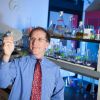 +27 +1
+27 +1Artificial enzyme: Protein designed entirely from scratch functions in cells as a life-sustaining catalyst
A dawning field of research, artificial biology, is working toward creating a genuinely new organism. At Princeton, chemistry professor Michael Hecht and the researchers in his lab are designing and building proteins that can fold and mimic the chemical processes that sustain life. Their artificial proteins, encoded by synthetic genes, are approximately 100 amino acids long, using an endlessly varying arrangement of 20 amino acids.
-
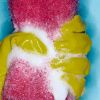 +22 +1
+22 +1Mats made of active proteins soak up pollution
A new way to keep proteins active outside of cells could lead to a range of uses in environments like war zones and contaminated sites.
-
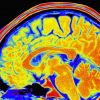 +3 +1
+3 +1DNA tests can predict intelligence, scientists show for first time
Intelligence could be measured with a swab of saliva, or drop of blood, after scientists showed for the first time that a person’s IQ can be predicted just by studying their DNA. In the largest ever study looking at the genetic basis for intelligence, researchers at the University of Edinburgh and Harvard University discovered hundreds of new genes linked to brain power.
-
 +5 +1
+5 +1A new blood test can detect eight different cancers in their early stages
There are currently few effective and non-invasive methods to screen for early stages of cancer. But scientists have now developed a new blood test that promises to detect eight different cancers.
-
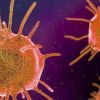 +17 +1
+17 +1Scientists created a synthetic molecule, and it could end antibiotic resistance
Antibiotic resistance in bacteria, which includes both common bugs and so-called superbugs, is a serious and globally recognized problem. In fact, the United Nations elevated the issue to a crisis level almost a year ago now, and the World Health Organization (WHO) has stated that it’s rapidly worsening.
-
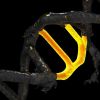 +34 +1
+34 +1This Incredible Footage Shows CRISPR Editing DNA in Real Time
Want to see something that makes scientists gasp? Feast your eyes on this video, showing a direct observation of CRISPR-Cas9 munching up a piece of DNA.
-
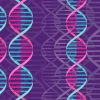 +16 +1
+16 +1Gene-editing tool CRISPR can now manipulate more types of genetic material
The powerful gene-editing tool CRISPR has been making headlines for its ability to edit DNA, which could one day transform how we fight cancer and other life-threatening diseases. Now, scientists have created a new version of CRISPR that can target and edit a different genetic building block: RNA. The new tool, described in a study published today in Science, offers several advantages: its edits, for instance, aren’t permanent, which makes gene editing much safer.
-
 +19 +1
+19 +1Doctor told to stop marketing 3-person baby technique
U.S. regulators on Friday warned a New York fertility doctor to stop marketing an experimental procedure that uses DNA from three people — a mother, a father and an egg donor — to avoid certain genetic diseases. The doctor, John Zhang, used the technique to help a Jordanian couple have a...
Submit a link
Start a discussion




















